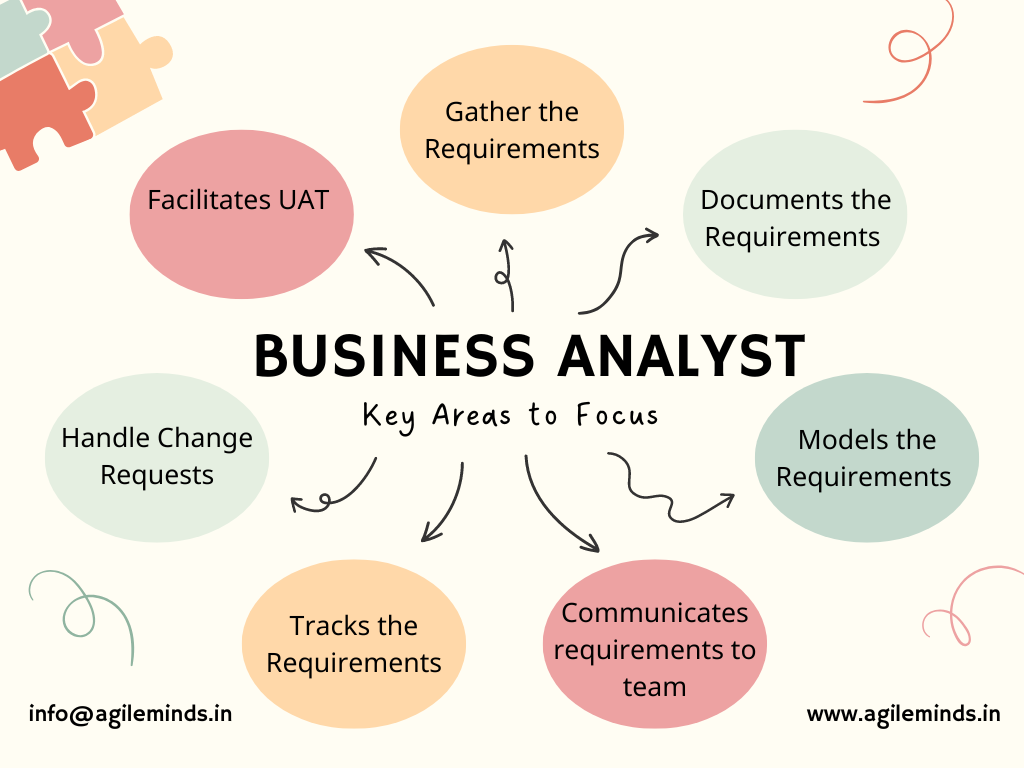Business analysts play a critical role in organizations by bridging the gap between business needs and technology solutions. Business analyst work in 7 areas to ensure successful project outcomes. Here are seven key areas on which business analysts typically work:
Gather Requirements: Business analysts work closely with stakeholders to identify, document, and understand the requirements of a project. This involves conducting interviews, workshops, and other techniques to gather information about business processes, systems, and user needs. They analyze the gathered requirements to ensure they are clear, complete, and aligned with business goals.
Document the Requirements: Once the requirements are gathered, business analysts document them in a structured manner using various techniques such as use cases, user stories, process flows, data models, and requirement documents. These documents serve as a reference for the project team and stakeholders throughout the project lifecycle.

Model the Requirements: Business analysts use modeling techniques such as process modeling, data modeling, and system modeling to represent the requirements visually. These models provide a visual representation of how the requirements will be implemented in the final solution, helping the team better understand and refine the requirements.
Communicate Requirements to Team: Business analysts act as a liaison between business stakeholders and the development team. They effectively communicate the requirements to the team, ensuring that everyone has a clear understanding of what needs to be delivered. They also facilitate discussions and negotiations to resolve any conflicts or ambiguities in the requirements.
Track the Requirements: Business analysts track the progress of requirements throughout the project lifecycle. They ensure that requirements are implemented as per the approved specifications and that any changes are documented, communicated, and approved. They also monitor risks and issues related to requirements and take necessary actions to mitigate them.
Handle Change Requests: Business requirements often change during the course of a project. Business analysts are responsible for managing change requests, analyzing their impact on the project, and updating the requirements and documentation accordingly. They work closely with stakeholders to understand the rationale behind changes and assess their feasibility.
Facilitate User Acceptance Testing (UAT): Business analysts play a key role in facilitating UAT, where end users test the solution to ensure it meets their needs. They work with stakeholders to define test scenarios, create test cases, and coordinate with the testing team. They also analyze the test results and ensure that any defects or issues identified during UAT are addressed before the final solution is deployed.
In conclusion, business analysts work in various key areas to ensure that projects are delivered successfully. They gather, document, and model requirements, communicate them to the team, track their progress, handle change requests, and facilitate user acceptance testing. Their expertise in these areas helps organizations achieve their business objectives by delivering solutions that meet user needs and align with business goals.
To know more about or Business Analyst Bootcamp click here
